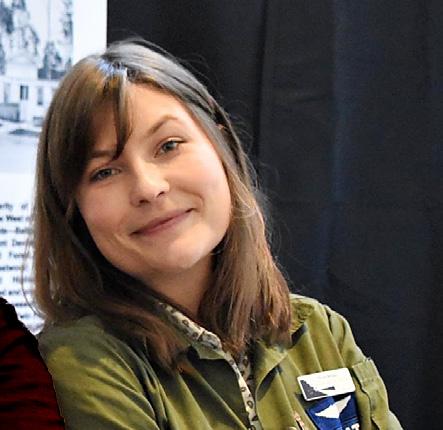
3 minute read
Director’s Message
When I was at the podium working my way through the program for our recent (successful!) gala, I realized that I’ve been with Western Neighborhoods Project for 10 years. I started volunteering with the organization in 2012 at the age of 27, hoping to expand my resume as a calculated career move. Instead, I found a group of people who loved all the same things I did, and I ended up with a surrogate family.
Let’s be honest: nonprofit community history work is hard, and the most rewarding way to go about it is to do it with folks you love. Hence why we have another Where in West S.F.? written by one of my favorite human beings, Paul Judge, with the usual appearance from Charlie the History Poodle. Nothing makes history more approachable than when it’s seen from the viewpoint of an adorable poodle, am I right?
Advertisement
Unless, of course, it comes straight from the source. For our oral history this quarter, we’re proud to present the story of Irene Soo Hoo Wong, a participant in Chinese in the Richmond, our collaboration with the Chinese Historical Society of America. Her family owned and operated Richmond Mexico City Restaurant on Clement Street between 9th and 10th Avenues for decades, and it was one of the most beloved tamale joints in town.
This issue, we’re also featuring a story from one of San Francisco’s most storied families, the Fleishhackers. In exploring the history behind a map that was hidden in a closet for decades, David Fleishhacker (with the expert assistance of Angus Macfarlane) uncovered information that compels us to reconsider a longstanding theory about the initial cultivation of Golden Gate Park – one that’s been touted by historians, journalists, and the Recreation and Parks Department. Just goes to show you that one man’s genealogical discovery can have farreaching impacts on how a city remembers its past.
One of the Fleishhacker family’s gifts to the city that is near and dear to us is the Mothers’ Building, which survives within the zoo but is in desperate need of conservation and a new purpose. We hope that can happen by its 100-year anniversary in 2025. In the meantime, Isabel Scanlon – our first-ever paid intern – traces its history. Isabel did incredible research for us and I’m thrilled to finally share it with you here.
It’s true that most of us aren’t as influential as the Fleishhackers or the Soo Hoos, but that doesn’t make our own genealogy any less valuable. Ultimately, we’re a family because we’re all San Franciscans, and that gives us a shared history that is incomplete without having everyone at the table. I’m reminded of the Museum of Modern Art’s 1955 photography exhibition, Family of Man. A reflection on World War II, it showcased the universal solidarity of being human, no matter where you lived. The point was to elevate everyday people who were living, despite what they had just survived.
There’s comfort in feeling related to the people around us. I believe this now more than ever, as war tears through Ukraine, as a pandemic continues to unsettle the world, and as semiautomatic weapons wreak havoc again in America. This has nothing to do with San Francisco’s west side, but everything to do with how we feel about living here and how important our community history work is, in its response to these feelings by providing context, filling gaps in the truth, and hopefully feeling whole together.
As always, I’m so grateful to be able to do this with and for all of you, dear members. Thank you for being part of the WNP family.








